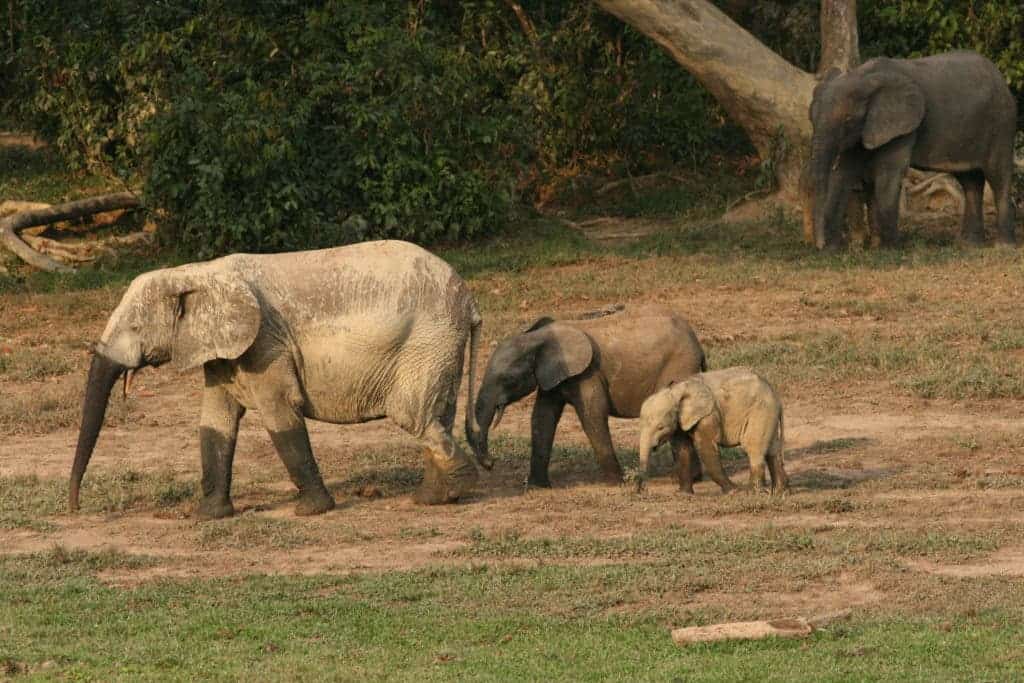Found in West and Central Africa, forest elephants have played a key role in shaping the structure of the continent’s rainforest. The species is now threatened by extinction, which could lead to a reduction in forest biomass and a decline in carbon stocks of up to seven percent, according to a new paper in Nature Geoscience

Fabio Berzaghi and colleagues analyzed the effects of elephants on the structure, productivity and carbon storage of African rainforests. They quantify these effects based on field data and model simulations that incorporate elephant disturbance, which they define as the destruction of plants.
Forest elephants kill trees smaller than 30 cm in diameter that are located on and near trails used for movement. This leads to changes in the competition for light, water and space among trees and favors the emergence of fewer and larger trees, which increases the amount of carbon stored.
“Megaherbivores and most large herbivores are now endangered, and their disappearance may have important ecological repercussions. Elephants, one of the last remaining megaherbivores, are classified as vulnerable or endangered by the International Union for Conservation of Nature Red List,” the authors claimed.
Forest elephants are a distinct subspecies of African elephants. They are uniquely adapted to the forest habitat of the Congo Basin. Up to 30 percent of tree species may require elephants to help with dispersal and germination. They play a pivotal role in shaping their habitat.
But they are rapidly declining in numbers. They are threatened by activities such as poaching for ivory, mining and logging concessions, and road expansion. Their population has declined from 1,200,000 to the currently estimated 415,000, according to WWF.
“The large-scale effects over the entire African forest depend critically on the actual area under elephant disturbance, and on the spatial patterns of trails,” the authors argued.
The projected decrease of seven percent in carbon stocks due to the decline in the number of forest elephants could be reversed through conservation efforts, Berzhagi and colleagues claimed. This would represent a carbon storage service of up to US$43 billion.






